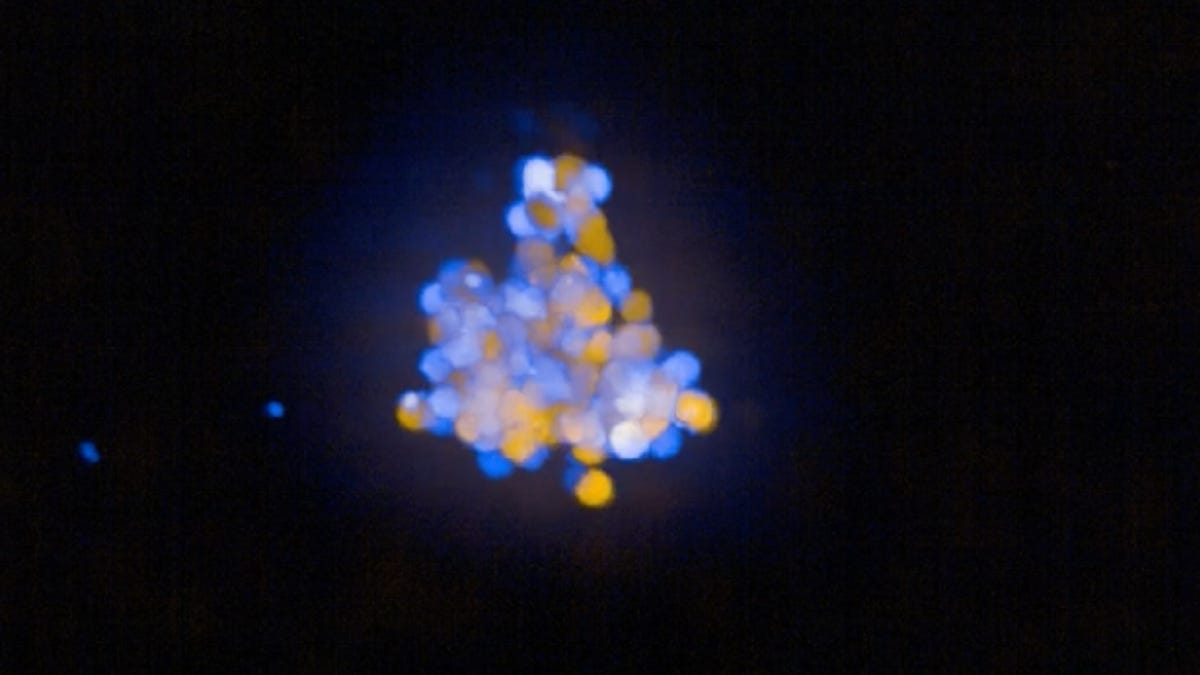New 'Cellular Glue' Concept Could Heal Wounds, Regrow Nerves
One day, these synthetic molecules could also help mitigate the organ shortage crisis.

The team's new "cellular glue" molecules helped these cells assemble into a structure.
Researchers from the University of California, San Francisco announced a fascinating innovation on Monday. They call it "cellular glue" and say it could one day open doors to massive medical achievements, like building organs in a lab for transplantation and reconstructing nerves that've been damaged beyond the reach of standard surgical repair.
Basically, the team engineered a set of synthetic molecules that can be manipulated to coax cells within the human body to bond with one another. Together, these molecules constitute the so-called "cellular glue" and act like adhesive molecules naturally found in and around cells that involuntarily dictate the way our tissues, nerves and organs are structured and anchored together.
Only in this case scientists can voluntarily control them.
"The properties of a tissue, like your skin for example, are determined in large part by how the different cells are organized within it," Adam Stevens, a researcher at UCSF's Cell Design Institute and first author of a paper in the journal Nature, said in a statement. "We're devising ways to control this organization of cells, which is central to being able to synthesize tissues with the properties we want them to have."
Doctors could eventually use the sticky material as a viable mechanism to mend patients' wounds, regrow nerves otherwise deemed destroyed and potentially even work toward regenerating diseased lungs, livers and other vital organs.
That last bit could lend a hand in alleviating the crisis of donor organs rapidly running out of supply. According to the Health Resources and Services Administration, 17 people in the US die each day while on the waitlist for an organ transplant, yet every 10 minutes, another person is added to that list.
"Our work reveals a flexible molecular adhesion code that determines which cells will interact, and in what way," Stevens said. "Now that we are starting to understand it, we can harness this code to direct how cells assemble into tissues and organs."
Ikea cells
Right after babies are born (and even when they're still in the womb) their cells essentially find it easy to reconnect with one another when a bond is lost. This is primarily because kids are still growing, so their cells are still actively coming together. But as a consequence, that's also why their scratches and scrapes tend to heal quite quickly.
In other words, think of children's cell molecules as having lots of clear-cut instructions on how to put themselves together to make tissues, organs and nerves. They're like sentient little pieces of Ikea furniture with the store's building booklet in hand.
As people get older, however, those biological Ikea instructions get put in the attic, the team explains. That's because, for the most part, the body is pretty solidified -- and this is sometimes a problem. For instance, when someone's liver gets really damaged, their liver cell molecules may need to refer back to those Ikea instructions but can't find them.
But that's where "cellular glue" molecules come in. These rescuers can essentially be primed with those Ikea instructions before being sent into the body, so their blueprint is fresh. Scientists can load them up with information on which cell molecules to bond with and even how strongly to bond with them.
Then, these glue molecules can guide relevant cells toward one another, helping along the healing and regeneration processes.
"Cellular glue" helped these cell molecules stick together as well during the team's experiments.
"In a solid organ, like a lung or a liver, many of the cells will be bonded quite tightly," explains a UCSF description of the new invention. "But in the immune system, weaker bonds enable the cells to flow through blood vessels or crawl between the tightly bound cells of skin or organ tissues to reach a pathogen or a wound."
To make this kind of customization possible, the researchers added two important components to their cellular glue. First, part of the molecule acts as a receptor. It remains on the outside of the cell and determines which other cells the molecule is allowed to interact with. Second, there's the bond-strength-tuner. This section exists within the cell. Mix and match those two traits and, the team says, you can create an array of cell adhesion molecules prepped to bond in various ways.
"We were able to engineer cells in a manner that allows us to control which cells they interact with, and also to control the nature of that interaction," Wendell Lim, director of UCSF's Cell Design Institute and senior author of the paper, said in a statement.
In fact, the team says the range of potential molecules is wide enough that they could inform the academic stage of medical studies, too. Researchers could make mock tissues, for example, to deepen understanding of the human body as a whole.
Or as Stevens put it, "These tools could be really transformative."

